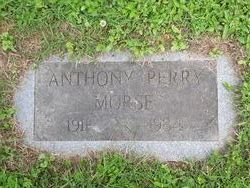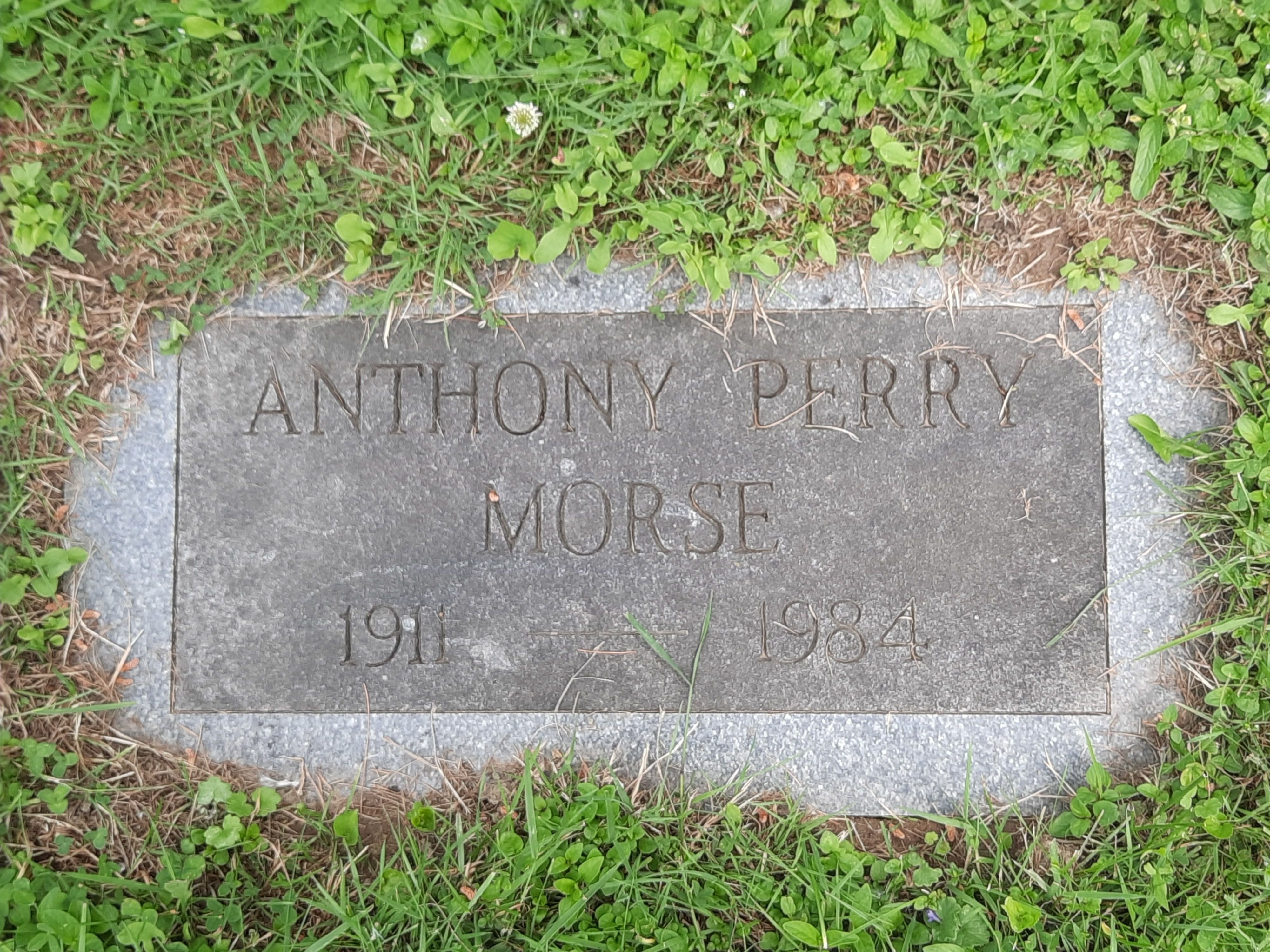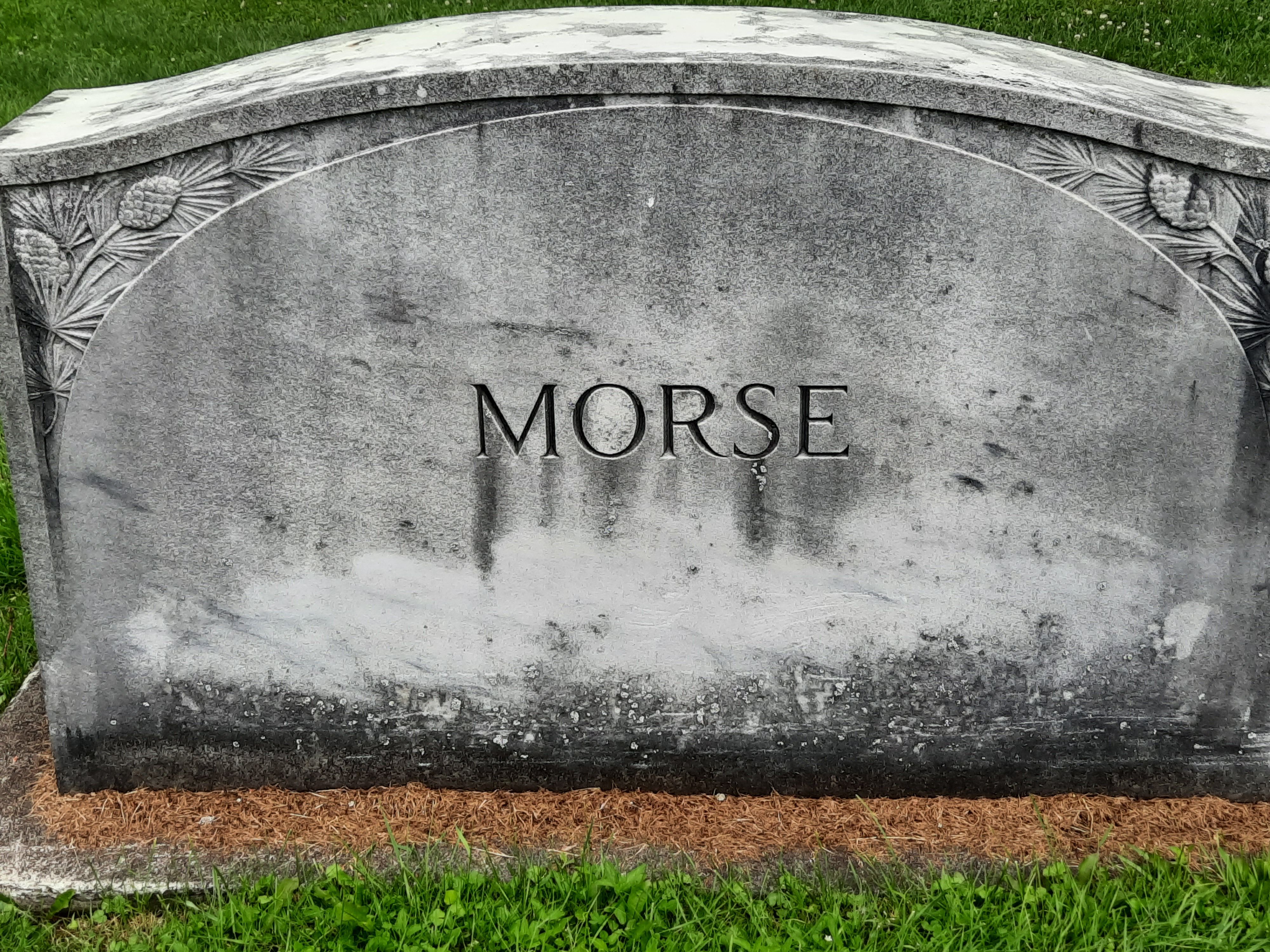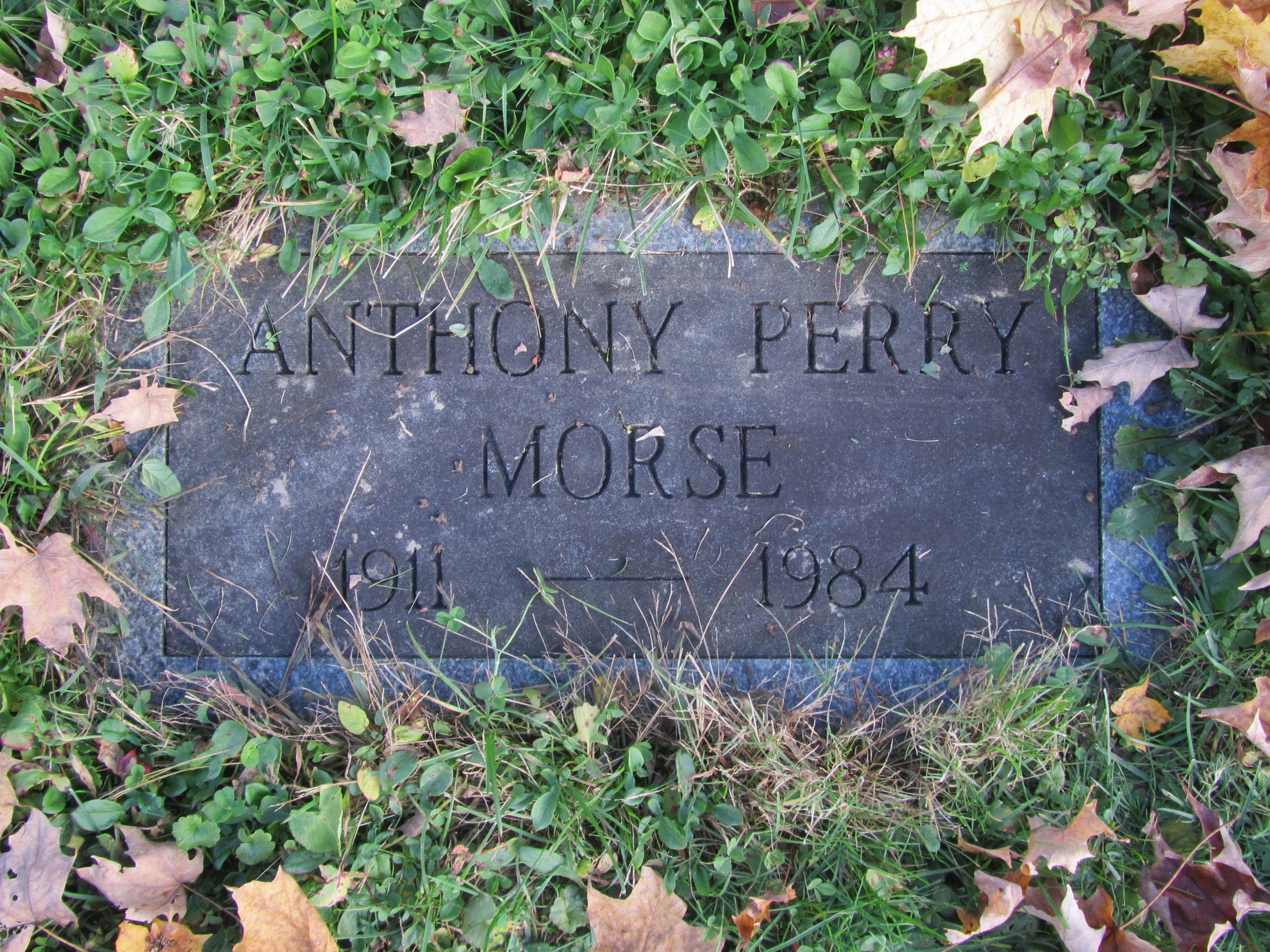After two years at the Institute for Advanced Study he joined the mathematics faculty at Berkeley where except for two interruptions he worked for the rest of his life on mathematics. In the first of these, from 1943 until the end of World War II, he worked on ballistics at the Aberdeen Proving Ground. In 1950 his life was interrupted by the McCarthy Era loyalty oath controversy. He was one of 29 "non-signers". However he was also one of 6 who took advantage of a 10-day grace period to sign, while continuing to refer to the remaining non-signers as "patriots.
Anthony Perry Morse, Mathematics: Berkeley
1911-1984
Professor Emeritus
Anthony Perry Morse was born and reared in Ithaca, New York. For many years he retained a strong attachment to the surrounding Finger Lakes region, to its streams where he canoed and its lakes where he swam, to its hills and glens, and to its apples and wines. During his early years in Berkeley he and his family often returned to the region in the summer, although he later discovered the Sierra and interspersed these eastward pilgrimages with camping trips in the mountains. Eventually he even granted that California vineyards produce some excellent wines.
After attending elementary schools in Ithaca, Morse went away to Hackley School and then entered Cornell University. His commitment to mathematics and his early mathematical research date from his undergraduate years at Cornell. A joint paper with R.P. Agnew and a continuing collaboration with J.F. Randolph began during these years.
Morse went to Brown University for graduate training. He received the Ph.D. degree there in 1937 for a thesis written under the direction of C.R. Adams. He spent the next two years at the Institute for Advanced Study at Princeton. His work during these years centered on abstract analysis and measure theory. He attracted a great deal of attention with a result relating the measure of the image of the set of critical points of a function (points where the function is locally level) to the degree of smoothness of the function. He began investigation that later led to his effective proof that there is no paradoxical decomposition of Banach-Tarski type for any subset of the plane of a fairly ordinary type. He also began work which culminated in the fifties and sixties in very substantial investigations of differentiations of measures and of product measures.
Morse came to Berkeley with his young family in 1939 at the invitation of G.C. Evans. His mathematical personality was pretty well developed by then. He was always eager to discuss mathematics with anyone, from beginning student to renowned mathematician. He did not much enjoy library work nor formal lectures, but he gloried in spoken give and take.
He rarely attended professional meetings unless he or a co-author was scheduled to speak.
Morse's own research was in pure mathematics, but he enjoyed discussing with colleagues basic questions of elementary geometry and theoretical mechanics. Perhaps this stemmed from his abiding interest in design and fabrication derived from his native curiosity and from association with his highly successful inventor-manufacturer father. He designed and constructed, wholly or in part, inventive improvements of electrical, plumbing or structural nature in almost every house he lived in. Once in Berkeley he was offered a job (at competitive pay) by a plumbing contractor helping to install a Morse-designed heating system in his house.
In the summer of 1943 Morse joined the staff of the Ballistic Research Laboratory at Aberdeen Proving Ground in Maryland. He crossed the continent from Berkeley with typical Morse fluorish, driving a station wagon filled with two adults, three children, a Newfoundland dog and an uncountable collection of luggage. He joined the group of mathematicians at the Laboratory known as the theory section. This section was charged with analysis of exterior ballistic problems arising from military requirements and with continuous theoretical investigations and preparations for anticipated needs. The section also arranged some new computations of required tables. Although he had had no previous experience with applied mathematics and had never supervised computational work, he made himself immediately valuable. His work preparatory to the construction of tables for rocket fire from air to ground was particularly nice. Nor should one forget the magnificent V.J. Day party for the theory section which took place in and around Morse's house.
Back in Berkeley after the war, Morse returned to his own research and to his own very personal style of teaching. The years of 1945-1960 probably marked the peak of his influence on students and on the graduate program at Berkeley. His mathematical discussions with students from his influential real variables course frequently bloomed into joint papers. His relationships with his Ph.D. students were intense; many became virtual members of the Morse household while under his tutelage.
Morse was a striking figure and he vibrated with enormous energy. He usually wore corduroy trousers and a checkered wool shirt. He strode briskly across the campus, often followed by a huge dog. He spouted mathematics, raised mathematical questions and explained esoteric gadgetry. He was exceedingly hospitable and made many enduring friendships. He was without pretension and was Tony to friends and many students alike. They peopled his dinner table, listened to him quote Houseman and Swinburne and argued with him about intricate matters, sometimes settled by authoritative reference and as often deliberately removed from appeal to fact.
Morse's contact with students lessened after 1960. He moved from Berkeley to Orinda after the end of his first marriage and he came to the campus less often. The Mathematics Department expanded substantially and new attractive fields became available to graduate students. And his own work was reaching its deepest and most difficult phase.
Morse's mathematical work had always displayed a certain formal precision. His proofs had not only to be correct, but meticulously so, and as general and as economical as possible. He came to regard himself as a toolmaker, making sophisticated, powerful, general purpose tools for the professional mathematician. He felt a need for a technically precise formal language and an all-encompassing mathematical framework for mathematics. This led him to develop a formal language and a strikingly unified theory of logic and sets. The work, under construction for decades and under revision at the time of his death, is his outstanding achievement. We attempt a very rough indication of its character.
The formal language, augmented by his theory of notation and his theory of definitions, can be read and written, not only by human mathematicians, but also by appropriately programmed computers. Indeed, a project on automatic proof checking and theorem proving based on Morse's system was begun at Sandia Laboratories in the mid-sixties.
Morse's unification of logic and set theory is effected by its treatment of terms and propositions as a single kind of entity. Thus, for example, every mathematical thing is a set and there is no difference between the conjunction of two or more things and their intersection, nor between the negation of a thing and its complement. Many niceties of conciseness and efficiency result from this unification.
We describe roughly the relationship of Morse's set theory to the two most widely used theories. One would like (with Frege) a set theory having a "glassification axiom scheme" which says that for each proposition there is a set consisting of precisely those things for which the proposition holds. But Russell showed that this is impossible, for if R is the set of all sets which are not members of themselves, then R is a member of R if and only if R is not a member of R. To get around this paradox, most, if not all, theories postulate first the existence of some sets or classes and then use these together with some modified classification scheme to get a great many others.
Zermelo-Fraenkel set theory postulates a relativized form of the classification axiom scheme: for each set A and each proposition there is a set consisting of those members of A for which the proposition holds. This is an axiom scheme in the sense that each proposition gives rise to an axiom and as there are infinitely many propositions, there are infinitely many axioms. It is noteworthy that in this theory every set is itself a member of some other set and no set contains all sets.
The von Neumann-Bernays-Gö set theory has only finitely many axioms (although it assumes a logic with infinitely many). This theory admits classes which are not members of any other class. Indeed: there is a universe, a class to which every member of every class belongs, and were it to belong to some class, then a paradox of the Russell type would ensue. There arises a "classification theorem scheme&" for a broad array of specially constructed propositions. The von-Neumann-Bernays-Gödel system is consistent if and only if the Zermelo-Fraenkel system is consistent.
Morse's set theory is definitely stronger than each of these two systems (and so there inheres in it a somewhat greater risk of contradiction). It is not finitely axiomatizable, admits a universe which belongs to no class, and has a classification theorem scheme which says that for any proposition whatsoever there is a class which consists of precisely those members of the universe for which the proposition holds. The theory is very usable, very flexible, and with its concurrent treatment of logic and its use of the formal language makes a complete framework for mathematics.
Morse retired in 1972 but continued to create mathematics and to work with students for another twelve years, until his death. He is survived by five children from his first marriage, and by his second wife and their daughter.
E.M. Beesley J.L. Kelley H. Lewy T.J. McMinn
After two years at the Institute for Advanced Study he joined the mathematics faculty at Berkeley where except for two interruptions he worked for the rest of his life on mathematics. In the first of these, from 1943 until the end of World War II, he worked on ballistics at the Aberdeen Proving Ground. In 1950 his life was interrupted by the McCarthy Era loyalty oath controversy. He was one of 29 "non-signers". However he was also one of 6 who took advantage of a 10-day grace period to sign, while continuing to refer to the remaining non-signers as "patriots.
Anthony Perry Morse, Mathematics: Berkeley
1911-1984
Professor Emeritus
Anthony Perry Morse was born and reared in Ithaca, New York. For many years he retained a strong attachment to the surrounding Finger Lakes region, to its streams where he canoed and its lakes where he swam, to its hills and glens, and to its apples and wines. During his early years in Berkeley he and his family often returned to the region in the summer, although he later discovered the Sierra and interspersed these eastward pilgrimages with camping trips in the mountains. Eventually he even granted that California vineyards produce some excellent wines.
After attending elementary schools in Ithaca, Morse went away to Hackley School and then entered Cornell University. His commitment to mathematics and his early mathematical research date from his undergraduate years at Cornell. A joint paper with R.P. Agnew and a continuing collaboration with J.F. Randolph began during these years.
Morse went to Brown University for graduate training. He received the Ph.D. degree there in 1937 for a thesis written under the direction of C.R. Adams. He spent the next two years at the Institute for Advanced Study at Princeton. His work during these years centered on abstract analysis and measure theory. He attracted a great deal of attention with a result relating the measure of the image of the set of critical points of a function (points where the function is locally level) to the degree of smoothness of the function. He began investigation that later led to his effective proof that there is no paradoxical decomposition of Banach-Tarski type for any subset of the plane of a fairly ordinary type. He also began work which culminated in the fifties and sixties in very substantial investigations of differentiations of measures and of product measures.
Morse came to Berkeley with his young family in 1939 at the invitation of G.C. Evans. His mathematical personality was pretty well developed by then. He was always eager to discuss mathematics with anyone, from beginning student to renowned mathematician. He did not much enjoy library work nor formal lectures, but he gloried in spoken give and take.
He rarely attended professional meetings unless he or a co-author was scheduled to speak.
Morse's own research was in pure mathematics, but he enjoyed discussing with colleagues basic questions of elementary geometry and theoretical mechanics. Perhaps this stemmed from his abiding interest in design and fabrication derived from his native curiosity and from association with his highly successful inventor-manufacturer father. He designed and constructed, wholly or in part, inventive improvements of electrical, plumbing or structural nature in almost every house he lived in. Once in Berkeley he was offered a job (at competitive pay) by a plumbing contractor helping to install a Morse-designed heating system in his house.
In the summer of 1943 Morse joined the staff of the Ballistic Research Laboratory at Aberdeen Proving Ground in Maryland. He crossed the continent from Berkeley with typical Morse fluorish, driving a station wagon filled with two adults, three children, a Newfoundland dog and an uncountable collection of luggage. He joined the group of mathematicians at the Laboratory known as the theory section. This section was charged with analysis of exterior ballistic problems arising from military requirements and with continuous theoretical investigations and preparations for anticipated needs. The section also arranged some new computations of required tables. Although he had had no previous experience with applied mathematics and had never supervised computational work, he made himself immediately valuable. His work preparatory to the construction of tables for rocket fire from air to ground was particularly nice. Nor should one forget the magnificent V.J. Day party for the theory section which took place in and around Morse's house.
Back in Berkeley after the war, Morse returned to his own research and to his own very personal style of teaching. The years of 1945-1960 probably marked the peak of his influence on students and on the graduate program at Berkeley. His mathematical discussions with students from his influential real variables course frequently bloomed into joint papers. His relationships with his Ph.D. students were intense; many became virtual members of the Morse household while under his tutelage.
Morse was a striking figure and he vibrated with enormous energy. He usually wore corduroy trousers and a checkered wool shirt. He strode briskly across the campus, often followed by a huge dog. He spouted mathematics, raised mathematical questions and explained esoteric gadgetry. He was exceedingly hospitable and made many enduring friendships. He was without pretension and was Tony to friends and many students alike. They peopled his dinner table, listened to him quote Houseman and Swinburne and argued with him about intricate matters, sometimes settled by authoritative reference and as often deliberately removed from appeal to fact.
Morse's contact with students lessened after 1960. He moved from Berkeley to Orinda after the end of his first marriage and he came to the campus less often. The Mathematics Department expanded substantially and new attractive fields became available to graduate students. And his own work was reaching its deepest and most difficult phase.
Morse's mathematical work had always displayed a certain formal precision. His proofs had not only to be correct, but meticulously so, and as general and as economical as possible. He came to regard himself as a toolmaker, making sophisticated, powerful, general purpose tools for the professional mathematician. He felt a need for a technically precise formal language and an all-encompassing mathematical framework for mathematics. This led him to develop a formal language and a strikingly unified theory of logic and sets. The work, under construction for decades and under revision at the time of his death, is his outstanding achievement. We attempt a very rough indication of its character.
The formal language, augmented by his theory of notation and his theory of definitions, can be read and written, not only by human mathematicians, but also by appropriately programmed computers. Indeed, a project on automatic proof checking and theorem proving based on Morse's system was begun at Sandia Laboratories in the mid-sixties.
Morse's unification of logic and set theory is effected by its treatment of terms and propositions as a single kind of entity. Thus, for example, every mathematical thing is a set and there is no difference between the conjunction of two or more things and their intersection, nor between the negation of a thing and its complement. Many niceties of conciseness and efficiency result from this unification.
We describe roughly the relationship of Morse's set theory to the two most widely used theories. One would like (with Frege) a set theory having a "glassification axiom scheme" which says that for each proposition there is a set consisting of precisely those things for which the proposition holds. But Russell showed that this is impossible, for if R is the set of all sets which are not members of themselves, then R is a member of R if and only if R is not a member of R. To get around this paradox, most, if not all, theories postulate first the existence of some sets or classes and then use these together with some modified classification scheme to get a great many others.
Zermelo-Fraenkel set theory postulates a relativized form of the classification axiom scheme: for each set A and each proposition there is a set consisting of those members of A for which the proposition holds. This is an axiom scheme in the sense that each proposition gives rise to an axiom and as there are infinitely many propositions, there are infinitely many axioms. It is noteworthy that in this theory every set is itself a member of some other set and no set contains all sets.
The von Neumann-Bernays-Gö set theory has only finitely many axioms (although it assumes a logic with infinitely many). This theory admits classes which are not members of any other class. Indeed: there is a universe, a class to which every member of every class belongs, and were it to belong to some class, then a paradox of the Russell type would ensue. There arises a "classification theorem scheme&" for a broad array of specially constructed propositions. The von-Neumann-Bernays-Gödel system is consistent if and only if the Zermelo-Fraenkel system is consistent.
Morse's set theory is definitely stronger than each of these two systems (and so there inheres in it a somewhat greater risk of contradiction). It is not finitely axiomatizable, admits a universe which belongs to no class, and has a classification theorem scheme which says that for any proposition whatsoever there is a class which consists of precisely those members of the universe for which the proposition holds. The theory is very usable, very flexible, and with its concurrent treatment of logic and its use of the formal language makes a complete framework for mathematics.
Morse retired in 1972 but continued to create mathematics and to work with students for another twelve years, until his death. He is survived by five children from his first marriage, and by his second wife and their daughter.
E.M. Beesley J.L. Kelley H. Lewy T.J. McMinn
Family Members
Sponsored by Ancestry
Advertisement
Advertisement












